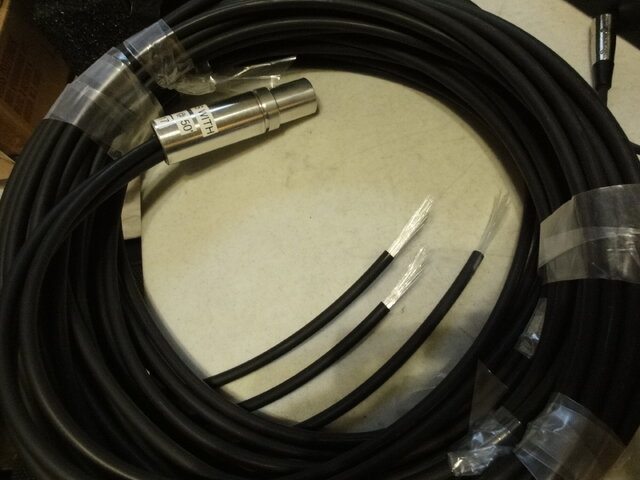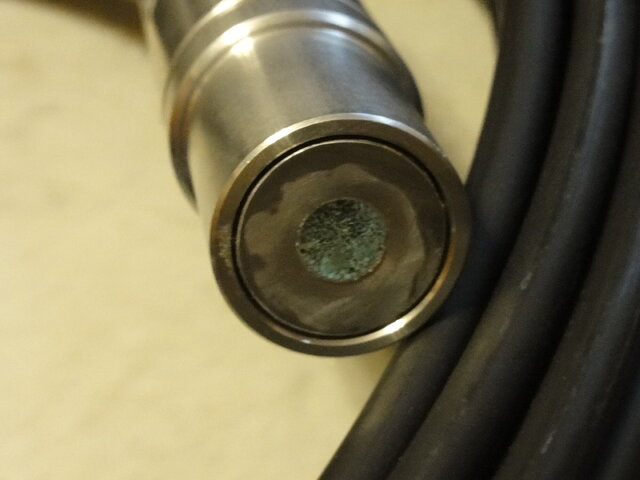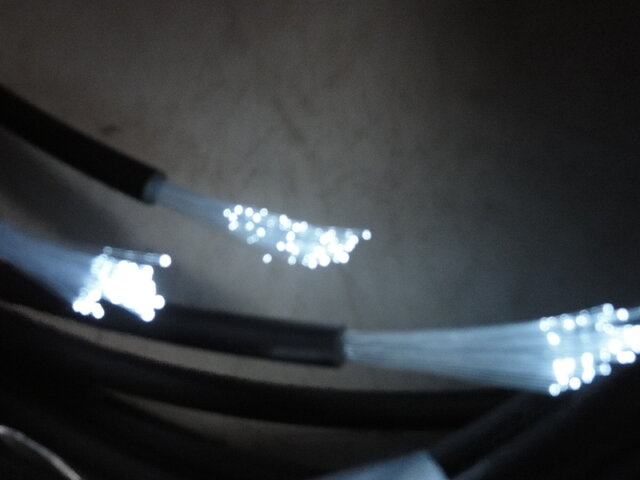curtis73
Well-Known Member
The longer story...
In the past I have made my own star drops by making a black drop and poking thousands of LED Christmas tree lights or fairy lights through it. It always made me a bit uneasy having the electrics in such close proximity to the fabric, even though it was IFR. I came up with a brilliant solution by using an older black drop, cut a few hundred 1" holes in it, then hung a mylar rain curtain upstage with some cyc lights hitting the mylar. Pretty effective, and I could put a scrim in between to mute or make more twinkles as the mylar danced behind the sharkstooth.
I need a star drop for our upcoming Side Show production and I pulled out the holey black drop only to realize that it's fire cert is WAY expired. I could re-treat it, but it's also developed a case of mildew while sitting unattended during the pandemic, and also it has rotted enough that I don't think it will hold its own weight if flown.
I don't have the budget for the fabric, nor do I think have the time to make a new one. (and I'm sure as heck not putting holes in my only other black drop.) I have tried mylar on styrofoam balls with a scrim and my iteration of that looked very much like an elementary school attempt.
Ideas for a quick and effective star drop? I can make the time if I have to fabricate it, or I can find a creative way to stretch the budget if I have to find fabric, that's just a fact I have to push through. I have some semi-shear poly fabric which I can treat, but not a fan FR treating a flammable fabric.
Things in the arsenal: A truckload of LED christmas lights, black scrim, mylar rain curtain (which is actually blue, but creative light choices can fix that).
Ideas so far: 1) buy several of those natural canvas drop cloths on the cheap, sew them together, dye/paint it black, do the poke thing with LED Christmas lights. 2) same idea, but put a thousand holes in the canvas and use the mylar/scrim, 3) some brilliant idea that you're about to tell me.
For reference, the proscenium is 40'w and 27' tall, and we typically trim borders at about 22-24'. I usually make drops for that space 24-27' tall and 40-50' wide. For something like this that will be upstage, I can imagine 24x40 will be fine.
In the past I have made my own star drops by making a black drop and poking thousands of LED Christmas tree lights or fairy lights through it. It always made me a bit uneasy having the electrics in such close proximity to the fabric, even though it was IFR. I came up with a brilliant solution by using an older black drop, cut a few hundred 1" holes in it, then hung a mylar rain curtain upstage with some cyc lights hitting the mylar. Pretty effective, and I could put a scrim in between to mute or make more twinkles as the mylar danced behind the sharkstooth.
I need a star drop for our upcoming Side Show production and I pulled out the holey black drop only to realize that it's fire cert is WAY expired. I could re-treat it, but it's also developed a case of mildew while sitting unattended during the pandemic, and also it has rotted enough that I don't think it will hold its own weight if flown.
I don't have the budget for the fabric, nor do I think have the time to make a new one. (and I'm sure as heck not putting holes in my only other black drop.) I have tried mylar on styrofoam balls with a scrim and my iteration of that looked very much like an elementary school attempt.
Ideas for a quick and effective star drop? I can make the time if I have to fabricate it, or I can find a creative way to stretch the budget if I have to find fabric, that's just a fact I have to push through. I have some semi-shear poly fabric which I can treat, but not a fan FR treating a flammable fabric.
Things in the arsenal: A truckload of LED christmas lights, black scrim, mylar rain curtain (which is actually blue, but creative light choices can fix that).
Ideas so far: 1) buy several of those natural canvas drop cloths on the cheap, sew them together, dye/paint it black, do the poke thing with LED Christmas lights. 2) same idea, but put a thousand holes in the canvas and use the mylar/scrim, 3) some brilliant idea that you're about to tell me.
For reference, the proscenium is 40'w and 27' tall, and we typically trim borders at about 22-24'. I usually make drops for that space 24-27' tall and 40-50' wide. For something like this that will be upstage, I can imagine 24x40 will be fine.






